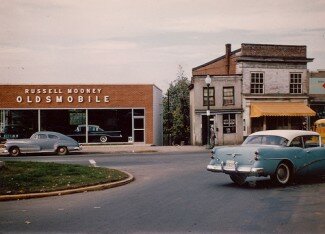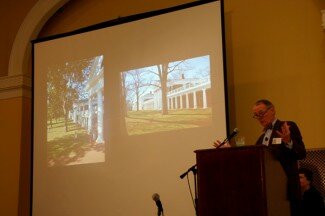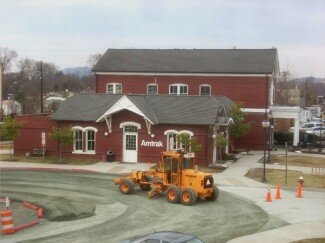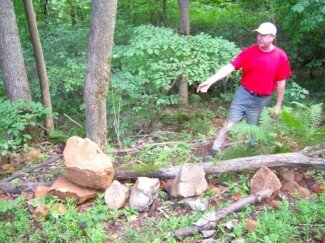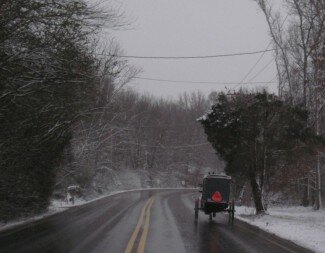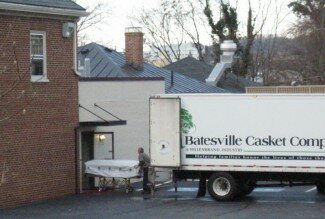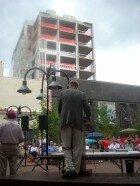 Charlottesville Mayor Dave Norris celebrates the completion of the Mall re-bricking project, while the uncompleted Landmark looms.
FILE PHOTO BY DAVE MCNAIR
Charlottesville Mayor Dave Norris celebrates the completion of the Mall re-bricking project, while the uncompleted Landmark looms.
FILE PHOTO BY DAVE MCNAIR
Quite a few additions to our physical landscape in 2009 took a long time to materialize, and others could take a longer time still. Was it worth the wait? And are they worth waiting for? We’ll let you be the judge as we present some On Architecture highlights from 2009.
We’re calling this first photo the “On Architecture Photo of the Year” for the way it brings together two controversial projects in 2009. Charlottesville Mayor Dave Norris, with City Councilor Satyendra Huja beside him, stood in the shadow of what has become Charlottesville’s most famous unfinished building, the $31 million Landmark Hotel, as they presided over a May 29 dedication ceremony for the $7.5 million Downtown Mall re-bricking project. The hotel’s financier, Halsey Minor, and its developer, Lee Danielson, dreamed of a luxury hotel towering over the Mall’s new Halprinian bricks, complete with a roof-top restaurant with spectacular views. But Minor and Danielson had a sudden falling out, and Minor an alleged falling short, leaving us with a very tall eyesore. Will the hotel get built in 2010? Minor has vowed to finish “that damn hotel because I started it,” but that appears to be as likely as Minor appearing, as he once put it, on the cover of the Hook with wings and a halo.
***

Over 300 workers lined the floors of the new Martha Jefferson Hospital.
FILR PHOTO BY BOB DAVE MCNAIR
New Martha Jefferson Hospital
At an October 14 “topping off” ceremony, the final steel beam was secured on the new 500,000-square-foot, $275 million Martha Jefferson Hospital on Pantops Mountain. As part of the ceremony, over 300 workers stood at attention along each floor of the building while MJH president James Haden hoped for their continued safety and thanked them for their hard work. The hospital, which Haden said was 40 percent complete at the time, is scheduled to be finished in 2012. Meanwhile, MJH’s old location on a 14-acre tract along Locust Avenue will be developed into a $170 to $200 million mixed-use development.
***

Sacajawea descendant Summer Morning Baldwin performed a traditional Shoshone sign language prayer at the dedication.
FILE PHOTO BY DAVE MCNAIR
Sacajawea gets a plaque
On June 10, close to a hundred people gathered at the foot of the Lewis and Clark statue at the intersection of streets called Ridge, Main, and McIntire to dedicate a plaque to Sacajawea, the Shoshone woman who accompanied Meriwether Lewis and William Clark on the first American expedition to the Pacific coast. It was a response to concerns that Sacajawea’s representation, crouched beneath the two men in bronze, underplayed her importance to the expedition. The City invited two of Sacajawea’s descendants to write the text and attend the ceremony.
“When I saw this statue I was very sad, but you are leading the way, Charlottesville,” Rose Ann Abrahamson, Sacajawea’s great-great-great niece, told the crowd. “I believe this expedition had divine intervention, because we are all here together.”
***

The Fry’s Spring Service Station on the eve of its spring sale.
FILE PHOTO BY TOM DALY
Fry’s Spring Service Station
The city’s only historically protected gas station, the circa 1931 Fry’s Spring Service Station, ended its more than 70-year run of car care when sold in April to Fry’s Garage LLC in McLean for $800,000. Run by owner Jimmy Houchens for more than 40 years, it made the Virginia Landmarks Register in 2007 for its Spanish colonial-meets-Jefferson exterior and its Art Deco bathrooms. But a family dispute held up its inclusion in state and national historic registers.
“I’ve been here since I was a baby,” Kristy Houchens, 37, told the Hook at the time of the sale. “It’s an icon. It’s kind of the end of an era.”
Meanwhile, the old service station begins a new era as a restaurant/coffee place/sports bar, according to the folks at the nearby Fry’s Spring Exxon, who say a guy named “PK” has been busy renovating the building. By press time, attempts to reach the owner(s) had been unsuccessful, but you can be sure we’ll keep trying.
***

After a summer squall, a rainbow appeared over the Gleason.
FILE PHOTO BY DAVE MCNAIR
The Gleason
During an open house reception in August atop the downtown ACAC for the topping off of the six-story, 122,000-square-foot Gleason condo building, one of the only planned downtown towers to actually get built, a rainbow after a sudden summer squall appeared to be a good omen. Not counting the new National Ground Intelligence Center and a few behemoths at UVA, it’s the biggest building ever constructed in Charlottesville. As it nears completion, more than half of its 38 condo units have been sold at prices ranging from $339,000 to $1.2 million.
Developer J.P. Williamson admitted the credit situation was grim, but said the demand for downtown residential space remains high. The simple trick for success, he said, was abandoning the old development model that got us into this mess.
“That speculative development model for mixed use condominium buildings— which never really existed in Charlottesville— dominated markets like Las Vegas, Atlanta, and Miami,” he said. “The classic speculative model— option a property, market it, hope to close acquisition and construction financing at the same time with limited equity model– is over.”
***

“I’ve always been proud of my design for the Downtown Mall,” said Lawrence Halprin in June.
PHOTO COURTESY LAWRENCE HALPRIN
Goodbye, Mr. Halprin
On Sunday, October 25, at the age of 93, Downtown Mall designer Lawrence Halprin died at his home in San Francisco. Along with Charlottesville’s Downtown Mall in 1976, Halprin designed the Franklin D. Roosevelt Memorial in Washington, DC, in 1997, Sea Ranch in Sonoma County, California, in 1967, and Ghirardelli Square in San Francisco in 1968. Halprin received the Thomas Jefferson Medal in architecture from UVA, as well as the nation’s highest artistic award, the National Medal of the Arts.
If it wasn’t for Halprin, the $7.5 million Mall re-bricking project might have been a fiasco, as City planners, who had not bothered to consult Halprin, originally wanted to replace the Mall’s old bricks with smaller new ones, not to mention adding a cascading water fall on the east end and a “Sister City Plaza” in front of the skating rink, which they believed would be more stable. However, when the Hook asked Halprin how he felt about the renovation, the size of the bricks was one of his main concerns.
“I feel it’s important to maintain the original brick size and pattern as the ground level establishes the character for the Mall,” he said. “If the bricks need to be replaced, I urge the city to replace them with similar ones.”
Even after Halprin’s comment, however, city planners continued to push for the smaller bricks, claiming that the larger 4 x 12 bricks were made only in a factory in Nebraska and would be prohibitively expensive.
Eventually, after some public pressure, the city heeded Halprin’s advice, somehow locating 4 x 12 bricks made in Virginia and relatively inexpensive. It was the last defense Halprin made for a Downtown Mall design he said remained “close to my heart.”
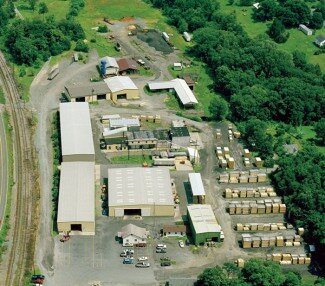 Developers want to build a 20-acre ‘Downtown Mall’ on the J. Bruce Barnes Lumber Company site.
Developers want to build a 20-acre ‘Downtown Mall’ on the J. Bruce Barnes Lumber Company site.



 Comments(30)
Comments(30)
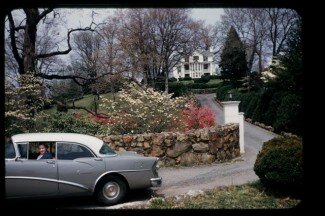
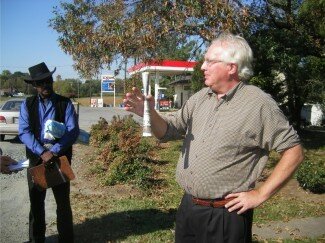

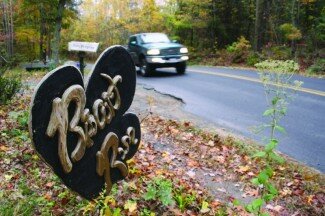

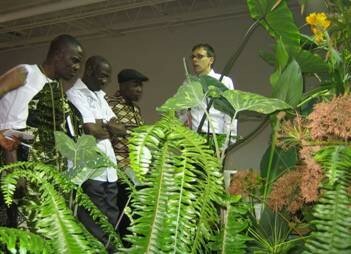





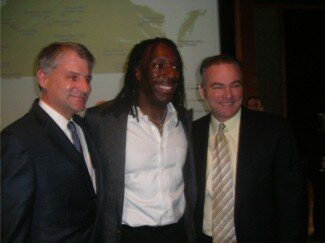
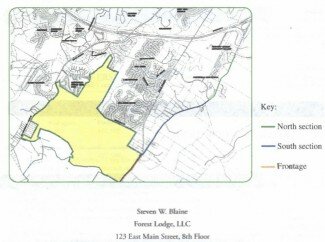 Part of a presentation to Albemarle planners.
Part of a presentation to Albemarle planners.





